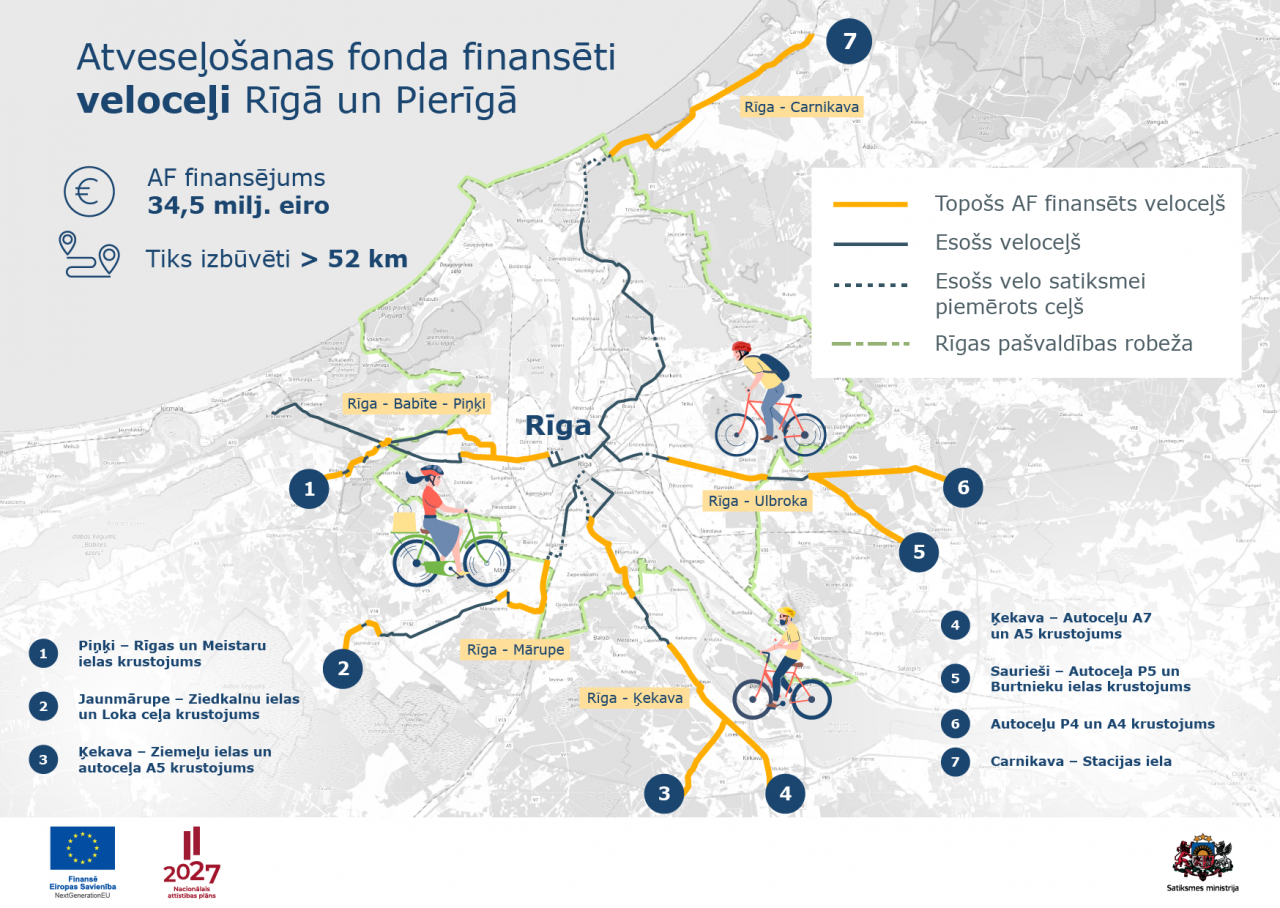On December 15, 2023 the train passenger operator Vivi has started their passenger services with new Škoda electric trains. Three trains are scheduled to operate on the first day. They will carry passengers on six routes along three of Latvia's four electrified railway lines - Tukums, Aizkraukle and Skulte, while journeys on the Jelgava railway line are scheduled to start a day later - on 16 December.
The new electric train was accompanied on its maiden journey by Valdis Dombrovskis, Executive Vice-President of the European Commission, Kaspars Briškens, Minister of Transport of the Republic of Latvia, Zdeneks Svata, Member of the Board of Škoda Group, and Rodgers Jānis Grigulis, Chairman of the Board of Pasažieru vilciens AS.
Valdis Dombrovskis, Executive Vice-President of the European Commission: "It is a pleasure to see EU funding being used to significantly improve the public transport system in Latvia. This will benefit thousands of passengers every day, enhancing their quality of life through improved transport connectivity and more mobility options. It is essential to continue to work together with Latvia's responsible officials and institutions to ensure that all European Union funding for transport infrastructure and connectivity in Latvia is used in a timely and efficient manner."
20 trains have been brought to Latvia. Škoda Group has set a target to hand over up to 19 of these trainsets to JSC Pasažieru vilciens by the end of this year. "Pasažieru vilciens" plans to receive all 32 electric trains, fully equipped to serve Vivi passengers, by mid-2024.
"I am pleased with what has been achieved and thank "Pasažieru vilciens" and the State Railway Technical Inspectorate, which did their job professionally, carrying out the preparatory work and inspections so that passengers could travel as soon as possible on the long-awaited new electric trains. This is a credit to the staff, not to the politicians. Today, we have taken a major step forward in the development of public transport, because with the support of European Union funds, Latvia is developing rail as the backbone of public transport. With the launch of passenger services with the new electric trains, we are closer to the goal of having all 32 trainsets of electrified trains available to the population as soon as possible. We will continue to work to increase the number of stops instead of closing stations, thus contributing to accessible and convenient mobility for citizens," said Kaspars Briškens, Minister of Transport.
Each train consists of four carriages. One electric train is 109 meters long. The train has seating for 436 passengers and parking for 454 passengers. Single-level boarding from passenger platforms will not only make the service accessible to everyone but also reduce the time needed for passenger changes at stops. Boarding and alighting speed is also enhanced by 1.3 meter wide double doors.
The new electric trains feature climate control, ergonomic seats and modern, spacious facilities that are also suitable for passengers with reduced mobility. They are equipped with video and audio information systems, powerful WiFi connection. The trains will run smoother and have lower noise levels in the carriages compared to those currently in use. The new trains are designed to reach speeds of up to 160 km/h (currently 120 km/h), with the maximum speed achievable on sections where the railway infrastructure permits it in the future.). The maximum speed will be possible on sections where the railway infrastructure allows it in the future.
The total cost of the project is €257.889 million and the purchase of 23 new electric trainsets is planned with co-financing of €114.211 million from the European Union Cohesion Fund.


